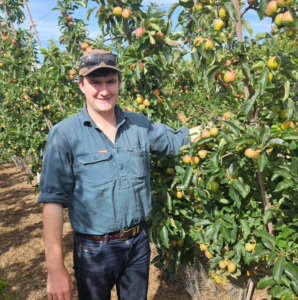Building resilience to drought - Beef producer and orchardist James Scott
With WA having its driest October on record in 2023, it’s been one of the driest finishes on record for Nannup beef and fruit producer James Scott.
James helps manage his family’s 425 ha property that comprises 20 ha of irrigated orchard with the remainder used for beef production. He spoke to South West NRM about how he is adapting to a warmer and drier climate.

Pasture Management
The dry finish has seen some hay paddocks stop growing before they could bulk up, which has meant the Scotts only cut 70% of their hay and silage paddocks.
“The other 30% just didn’t get the growth. We’ve had no real rainfall events here since mid-September. Normally we wouldn’t start mowing until at least the 21st of October, but his year we started on the 2nd or 3rd of October. We lost that growing period,” he said.
However, it could have been worse. While James doesn’t always have faith in seasonal outlooks, the forecast of a dry spring definitely helped fodder production this year.
Instead of splitting spring fertiliser into two applications 50%-50%, he applied 75% of fertiliser in the first application from August 20, and 25% in the second application from September 22. With no rain falling after the second application, the larger first application proved critical for increasing yield of the pasture, which was 80% ryegrass and 20% clover.
“From speaking to others, 70% (hay cut) is pretty good.”
Other aspects of their grazing management also helped this year, particularly deferring grazing at the start of the growing season.
“This year, deferment helped us in spades. We had enough grass to carry them through, whereas I know some people were still feeding silage well into July. So letting the grass get established, 100%!”
James started grazing on May 22. With plenty of pasture on offer, the cattle lost interest in the silage, so that was stopped.
For deferment, James put the cows onto Kikuyu flats as a sacrifice paddock because the kikuyu could handle the grazing pressure. They also fed silage and hay until the ryegrass on grazing paddocks had grown three leaves per tiller.
James said a more intensive production system had delivered benefits. Good rotational grazing management, combined with soil testing to replace nutrients, and nitrogen applications throughout the season increased feed and animal condition going into summer, demonstrating a good return on investment.
“In terms of applying nitrogen, there is a significant difference in bulk. It would seem to also keep the grass growing through colder weather. This means on a dry year, as long as it rains you will get grass growth to an extent it can be grazed and then still get a hay cut at the end that is sufficient.”
The Scotts apply lime regularly to offset any soil acidification that occurs as a consequence of the nitrogen applications. Recommended nitrogen rates for high rainfall pastures can be found here.
Changes implemented in the Orchard
James said it had been a good season in the orchard.
“In terms of orcharding weather this year it’s been perfect because we’ve been able to cut right back on fungicides. We got enough chill hours (to promote flowering and fruiting) thanks to a lack of rainfall,” he said.
“The dams are full and we’ve got plenty of storage for water.”
However, this year is already seeing more demand on water supplies.
“Usually we start irrigating about 15 October. This year I started on the 24th of September. So nearly a month early.”
“As long as we don’t have to irrigate full bore until June next year we should be ok.”
Hot winds in late November forced a significant pre-emptive increase in the amount of irrigation water normally used for that time of year.
The Scotts have already started to look at increasing water storage on the farm.
“We do have a dam site mapped out and that is likely to happen in the next ten years.”
A big paradigm shift in the orchard has involved planting different varieties and replacing irrigation.
“We’ve planted a fair bit of the orchard this year. All to trees that will handle warmer weather in winter. We’ve used closer plantings, for higher yield, but it also gives them a bit more protection from the sun.”
The Scotts have also started replacing old drip tape with new pressure compensating drip tape to get more consistent watering.
“As the old tape expands and contracts you get different rates of water on the orchard. To compensate, the drippers on the new tape have membranes that also expand and contract to provide a more even watering.”
Three soil moisture sensors have also been deployed in the orchard, one for each main soil type. The sensors are connected to the cloud and help monitor the depth of water infiltration so they could avoid excess leaching beyond the root zone.
“We base it on penetration. We don’t want water moving past the 40cm depth.”
The Scotts also have a DPIRD weather station nearby which they find helpful for general data collection and forecasting spraying conditions.
“It’s a wonderful asset to have at the moment. The only thing I would request to make us a bit more water efficient with our orchard spraying regime is a leaf wetness sensor,” he said.
“This will tell us if the grass is too wet or humid, which stops the spray from sticking to and penetrating leaves. It runs-off instead. So it would help us and everyone else because I know there’s a lot of other people having the same issues on pastures.”
Conclusion
So does James feel drought resilient?
“We’re starting to get a bit more prepared, but there’s still a long way to go. As far as this season goes, we’ve got carryover feed (200 hay rolls from 2022), so we are reasonably prepared, but we’ll just see what the summer throws at us.”
South West NRM is the appointed Bunbury Node Lead of the South West Drought Resilience & Adoption Innovation Hub hosted by the Grower Group Alliance
Visit our Drought Resilience Adoption and Innovation Hub page to read more about projects like this.



